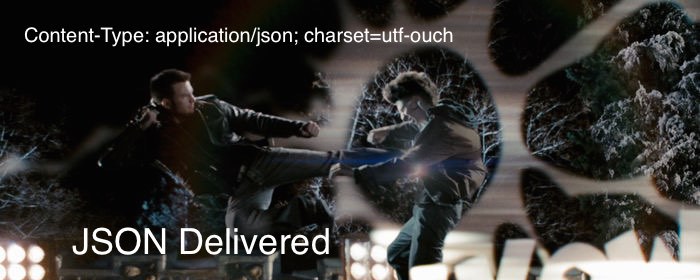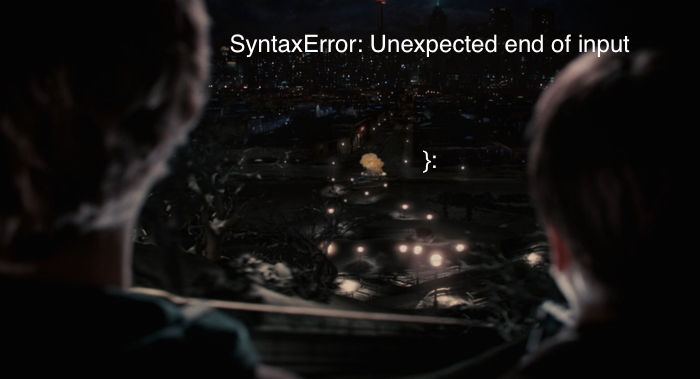JSON requests and the 2nd Evil Ex
How do JSON requests work?
Whenever you make a JSON request on the internet, you are coming dangerously close to reenacting Scott’s fight with Lucas Lee in Scott Pilgrim vs. The World. Here’s how.
First, the request
When you have some free time after browsing various places on the internet, you might want to get yourself some JSON. To start this interaction, you would ask a server for some JSON using HTTP.

Next, the response
Once the server recieves your request, it sends you JSON, as a normal HTTP response. The only difference is that the headers contain type information letting you know that the content is JSON.

Now what?
So you now have some information, but it’s not exactly JSON. In fact, since it came from an HTTP request, it is literally just text:
HTTP/1.1 200 OK
Server: mrlee.example.com
Content-Type: application/json; charset=utf-ouch
Status: 200 YEAH OKAY
{
"Mr.Lee": "The Best"
Let’s parse it
Because this text is less useful to you than the information it contains, you need to parse it.

Depending on the language you are using, parsing can look like many different things:
- .js:
theJson = JSON.parse(message); - .py:
the_json = json.loads(message) - .rb:
the_json = JSON.parse message .go:
err := json.Unmarshal(message, &theJson).sp:
grind the rails(.sp is scott pilgrim)

Either way, you end up with an object, dictionary, hash, struct, or skateboarding evil ex containing your data.
What if it fails?
Not all blobs of text you are sent will end up being actual JSON. When parsing JSON fails, the results can be catastrophic.

Moral of the story?
Sometimes you can defeat evil exes with improperly formatted JSON. But that’s less useful than actually getting information from other places.